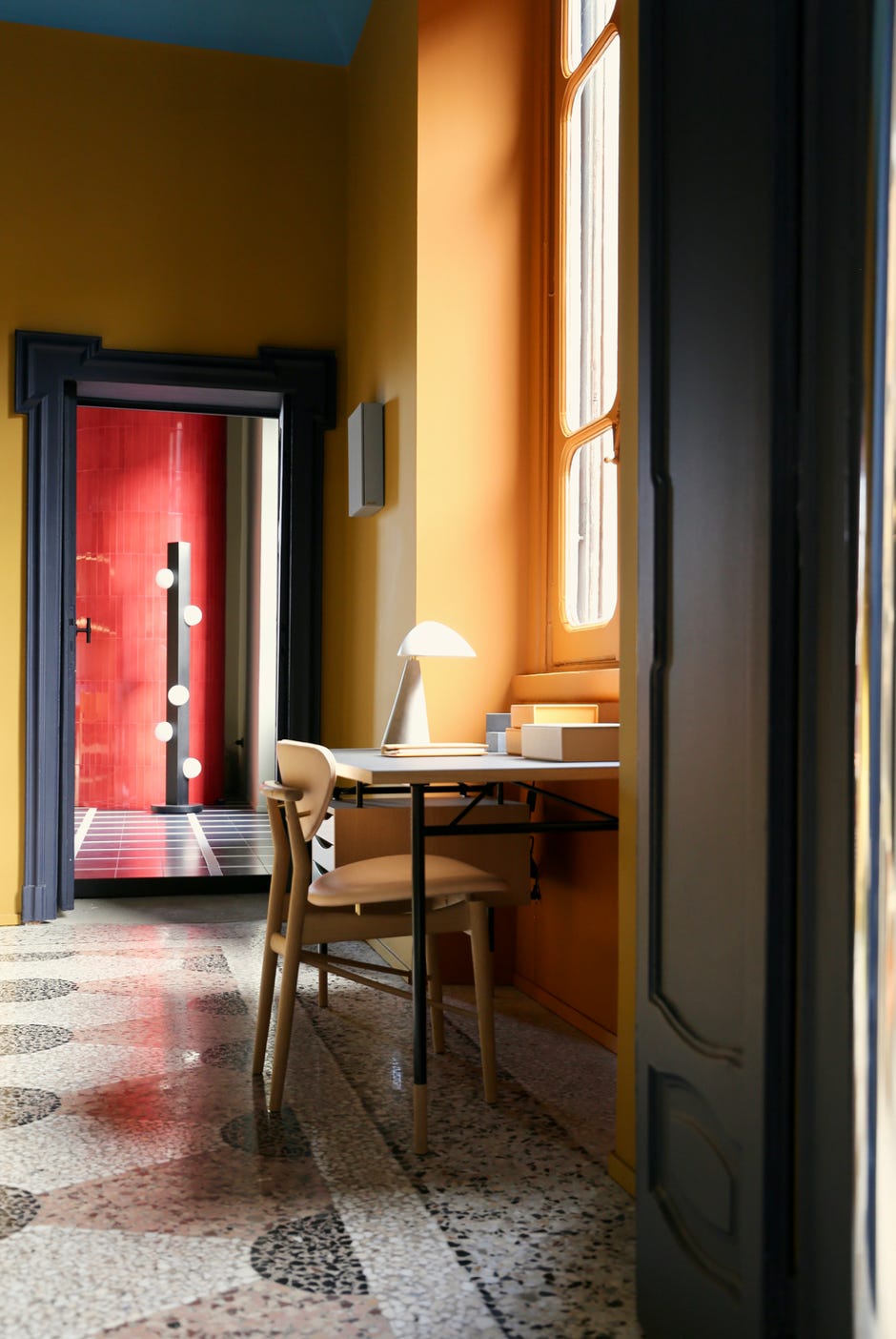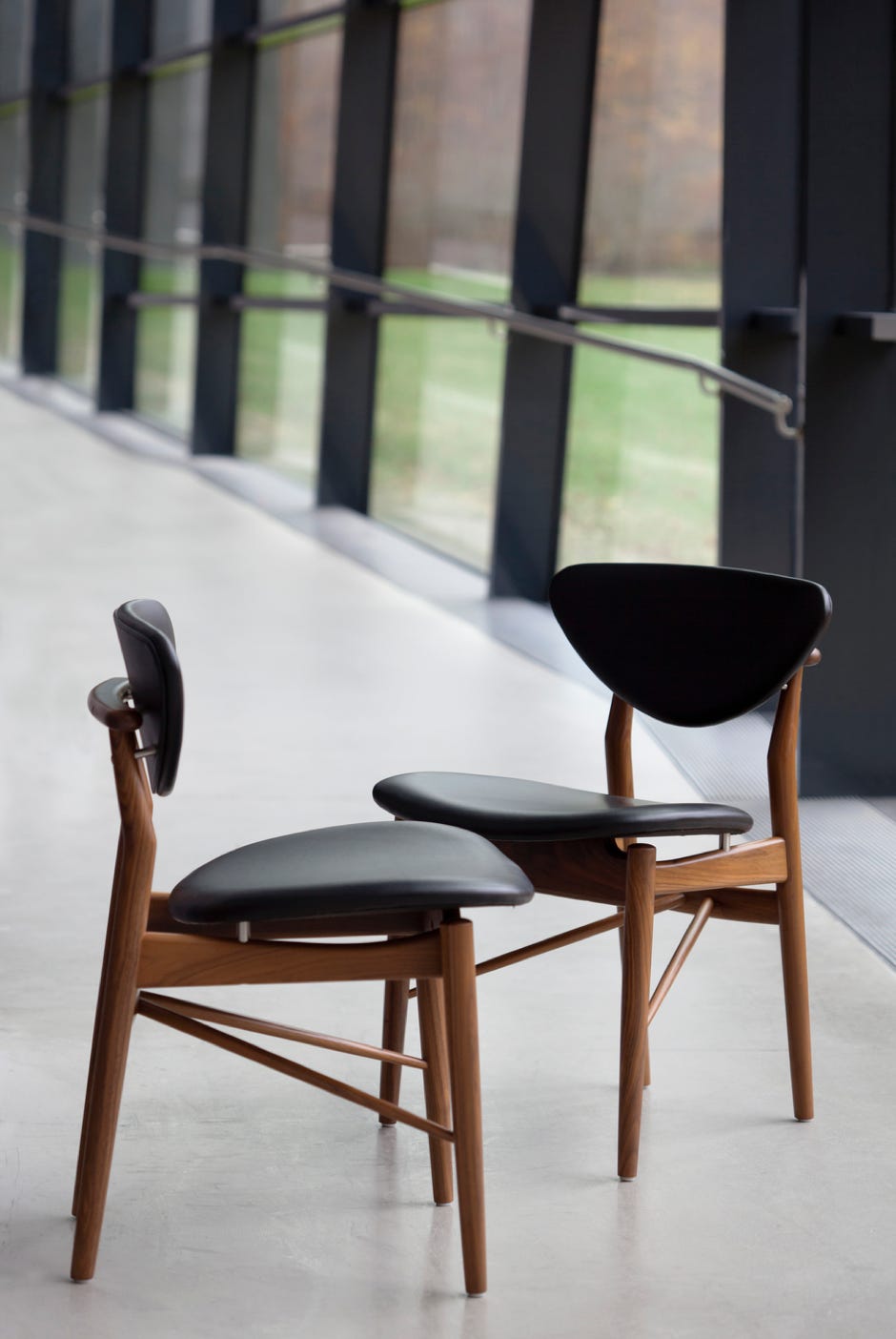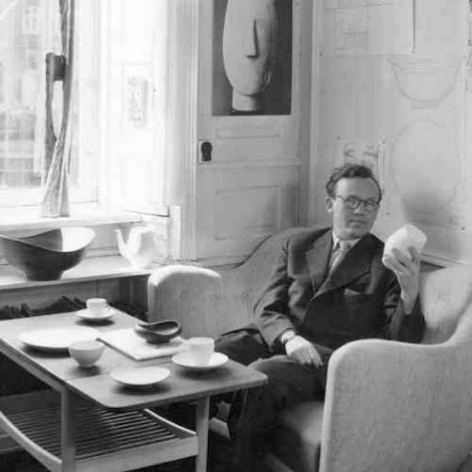

To this day, Finn Juhl's designs are unconventional and defy expectations with subtle details. Finn Juhl himself once said that the deviation is in the detail. This is also the case with his 108 Chair, which on the surface looks like any ordinary dining chair. Upon closer inspection, surprising details such as angled side bars and sliding cross bars are revealed. These details add unexpected movement and dynamics to the construction.
Finn Juhl’s philosophy of separating the carried and the carrying elements, thus creating space is apparent in this chair. Despite being both upholstered and very comfortable the 108 Chair manages to keep its lightness and appears beautiful from all angles.
The chair is manufactured in oak, walnut or black painted and is upholstered with fabric or leather.

Dimensions W51 x D46 x H75 cm – seat height 45cm
Upholstery fabric or leather

108 Chair
from
soaped oak
white oiled oak
oiled oak
clear lacquered oak
black painted
clear lacquered walnut
oiled walnut









Examples:
soaped oak
+ Watercolour Himalaya
soaped oak
+ Remix 123
soaped oak
+ cuir noir
soaped oak
+ cuir Vegetal 90
oiled oak
+ Remix 933
oiled oak
+ Watercolour Cast Iron
oiled oak
+ Remix 183
oiled oak
+ Hallingdal 764
oiled oak
+ leather Prestige noir
oiled oak
+ leather Elegance walnut
oiled walnut
+ Remix 163
oiled walnut
+ Watercolour Himalaya
oiled walnut
+ tissu Hallingdal 110
oiled walnut
+ Hallingdal 100
oiled walnut
+ Hallingdal 457
oiled walnut
+ Hallingdal 376
oiled walnut
+ Elegance walnut leather
oiled walnut
+ Vegetal 90 leather
black painted
+ Remix 143

As a teenager, Finn Juhl (1912-1989) wanted to become an art historian, having a passion for the fine arts since childhood. His father stopped him and Finn Juhl started architectural studies. Later, when his fame as a designer of furniture acquired, he speaks of himself as an autodidact, in reference to this upset vocation that forced him to walk intellectually on a lonely way. His style owes much to this singular trajectory, with its non academic interpretation of art visible in his work. Finn Juhl started his studies in 1930, a key period which saw the birth of modern design and furniture.
His modern offices in central Copenhagen was greeting his visitors with a huge Japanese fish in paper, symbol of imagination. Rather than thinking in terms of practical construction, Finn Juhl had the mind-set of a sculptor, when he shaped a piece of furniture. In the 1940s and 1950s, this way of working had never been seen before. His ambition was to design furniture with movement and life.
Juhl took pride in making both the structurally supportive elements of the furniture and the seated person look as though they are floating. In some of his chairs, the backrest and the seat are almost invisibly joined, as if they were clouds floating through the room.
In creating his furniture, Finn Juhl worked with two elements: The carrying element, and the carried. He eventually became known for his special ability to separate the bearing parts from the borne. This is one of many examples of how he broke free from conventional working methods and found his inspiration in art.